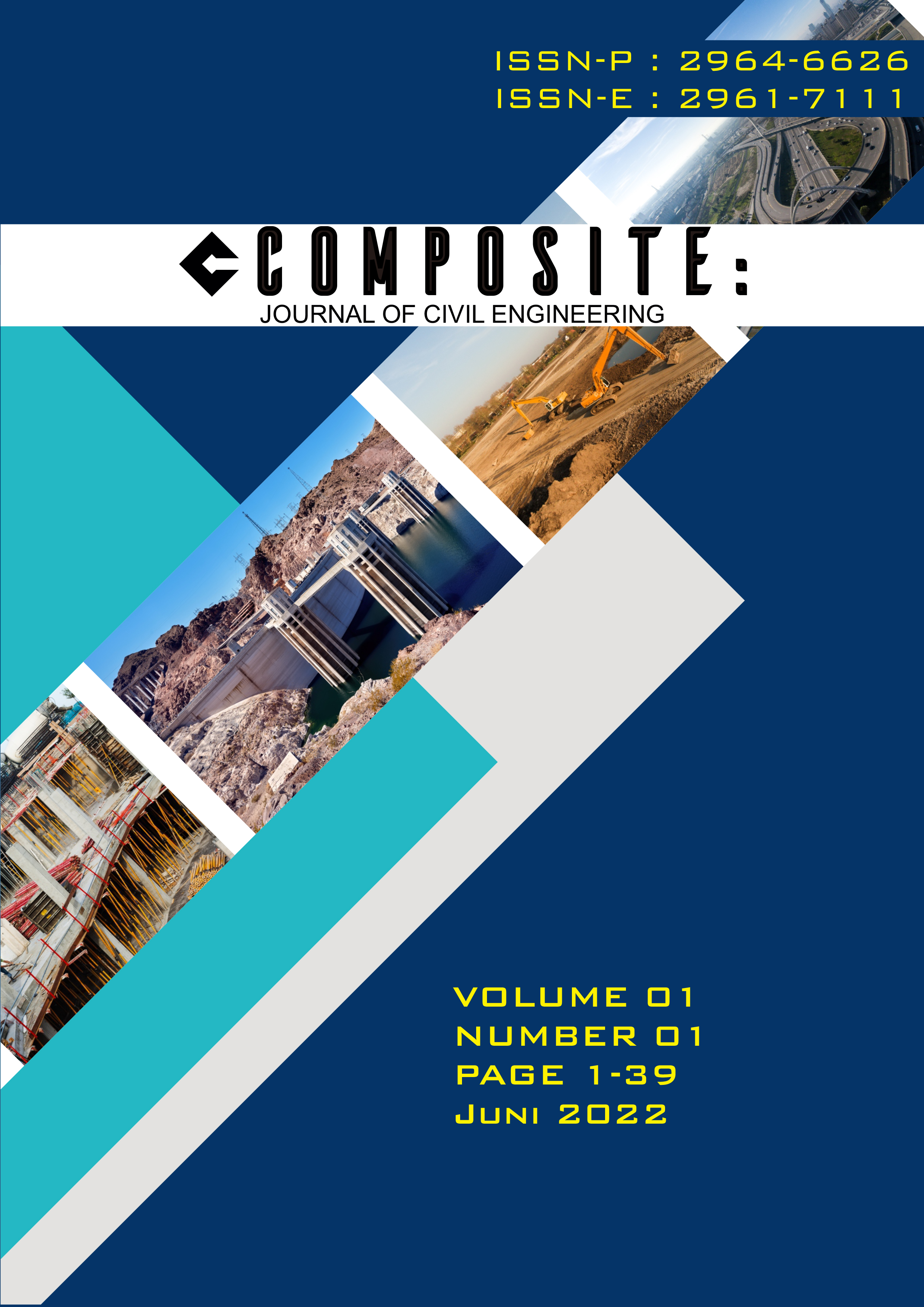Analisa Kinerja Simpang Tak Bersinyal Empat Lengan Jalan Muharto, Jalan Puntodewo, dan Jalan Muharto Gang 7 Kota Malang pada saat Pandemi COVID 19
DOI:
https://doi.org/10.26905/cjce.v1i1.7773Keywords:
Arus Lalu Lintas, Kinerja, Simpang Tidak BersinyalAbstract
Pertumbuhan penduduk saat ini sangat pesat. Hal ini menyebabkan penggunaan kendaraan bermotor semakin bertambah. Seiring bertambahnya volume kendaraan tidak diikuti oleh bertambahnya kapasitas jalan. Permasalahan klasik sering muncul yaitu sistem lalu lintas tidak dapat lagi melayani volumeNkendaran. Kondisi ini ditemukan di lokasi simpang empat Jalan Muharto, Jalan Puntodewo dan Jalan Muharto Gang 7 Kota Malang. Penelitian bertujuan untuk mengetahui kinerja simpang empat tidak bersinyal dengan menggunakan metode MKJI 1997. Hasil penelitian menunjukan bahwa kinerja simpang tidak memenuhi persyaratan. Perhitungan kapasitas pada simpang tersebut adalah 3232 smp/jam, sedangkan kapasitas maksimal seharusnya 2965 smp/jam. Hal ini menyebabkan derajat kejenuhan setinggi 1,09, sehingga tidak memenuhi persyaratan (DS>0,75). Tundaan yang terjadi yaitu 24,54 detik/smp. Kemungkinan terjadinya peluang antrian kendaraan adalah 47,98% – 95,84% dari derajat kejenuhan.
Downloads
References
Direktorat Jenderal Perhubungan Darat. 1998. “Pedoman Perencanaan dan Pengoperasian Fasilitas Parkirâ€. Jakarta: Direktorat Jenderal Perhubungan Darat.
Constanti, N. 2017. “Studi Evaluasi Kinerja Simpang Bersinyal Jalan Ranu Grati-Jalan Danau Toba Kota Malangâ€. Skripsi S-1 Program Studi Teknik Sipil Fakultas Teknik dan Perencanaan Intitut Teknologi Nasional Malang, data diperoleh melalui situs internet http://eprints.itn.ac.id/2018/1/isi%20skripsi.pdf
Departemen Pekerjaan Umum. 1997. “Manual Kapasitas Jalan Indonesia (MKJI)â€. Jakarta: Direktorat Jendral Bina Marga.
Oglesby, Clarkson H., & Hicks, R. Gary. 1990. “Teknik Jalan Rayaâ€. Jakarta: Edisi 4, Terjemahan, Erlangga.
Downloads
Published
How to Cite
Issue
Section
License
The copyright of the received article shall be assigned to the journal as the publisher of the journal. The intended copyright includes the right to publish the article in various forms (including reprints). The journal maintains the publishing rights to the published articles.

This work is licensed under a Creative Commons Attribution-ShareAlike 4.0 International License.










